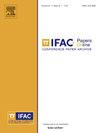Data-driven material removal rate estimation in bonnet polishing process
Q3 Engineering
引用次数: 0
Abstract
Bonnet polishing is an ultra-precision polishing technique used for manufacturing components utilized in optics, electronics, and Scientific instrumentation, where sub-nanometer accuracy is required. However, the process is not fully deterministic and requires multiple process-metrology iterations. In modern computer numerically controlled (CNC) machines, polishing is performed by moderating the bonnet tool dwell time at each location based on the input parameters and material removal rate (MRR). While the MRR is typically treated as constant once established, it continuously evolves due to the process’s dynamic nature and changing conditions. This variability in MRR impacts the convergence of the polishing process, necessitating repeated surface processing and resulting in increased manufacturing time and cost. In this work, we present a data-driven approach to estimate the amount of material removed during the pre-polishing routine in bonnet polishing. The estimations are based on the force exerted by the bonnet tool on a polished surface along the three dimensions. Measurements were obtained using a bespoke force table with load sensors across three axes, mounted on the Zeeko IRP600 machine table. The results demonstrate the Effectiveness of this data-driven approach for estimating MRR, achieving a mean absolute error of 0.0541 µm and a mean absolute percentage error of 5.89% across the test set.
阀盖抛光过程中数据驱动的材料去除率估计
阀盖抛光是一种超精密抛光技术,用于制造光学、电子和科学仪器中需要亚纳米精度的部件。然而,该过程不是完全确定的,需要多次过程计量迭代。在现代计算机数控(CNC)机床中,抛光是通过根据输入参数和材料去除率(MRR)调节阀盖刀具在每个位置的停留时间来完成的。虽然MRR一旦建立通常被视为常数,但由于过程的动态性和不断变化的条件,它会不断演变。MRR的这种可变性影响了抛光过程的收敛性,需要重复的表面加工,从而增加了制造时间和成本。在这项工作中,我们提出了一种数据驱动的方法来估计在阀盖抛光的预抛光过程中去除的材料量。这些估计是基于阀盖工具沿三维方向对抛光表面施加的力。测量使用定制的力表,其负载传感器横跨三轴,安装在Zeeko IRP600机床上。结果证明了这种数据驱动方法用于估计MRR的有效性,整个测试集的平均绝对误差为0.0541µm,平均绝对百分比误差为5.89%。
本文章由计算机程序翻译,如有差异,请以英文原文为准。
求助全文
约1分钟内获得全文
求助全文
来源期刊

IFAC-PapersOnLine
Engineering-Control and Systems Engineering
CiteScore
1.70
自引率
0.00%
发文量
1122
期刊介绍:
All papers from IFAC meetings are published, in partnership with Elsevier, the IFAC Publisher, in theIFAC-PapersOnLine proceedings series hosted at the ScienceDirect web service. This series includes papers previously published in the IFAC website.The main features of the IFAC-PapersOnLine series are: -Online archive including papers from IFAC Symposia, Congresses, Conferences, and most Workshops. -All papers accepted at the meeting are published in PDF format - searchable and citable. -All papers published on the web site can be cited using the IFAC PapersOnLine ISSN and the individual paper DOI (Digital Object Identifier). The site is Open Access in nature - no charge is made to individuals for reading or downloading. Copyright of all papers belongs to IFAC and must be referenced if derivative journal papers are produced from the conference papers. All papers published in IFAC-PapersOnLine have undergone a peer review selection process according to the IFAC rules.
 求助内容:
求助内容: 应助结果提醒方式:
应助结果提醒方式:


